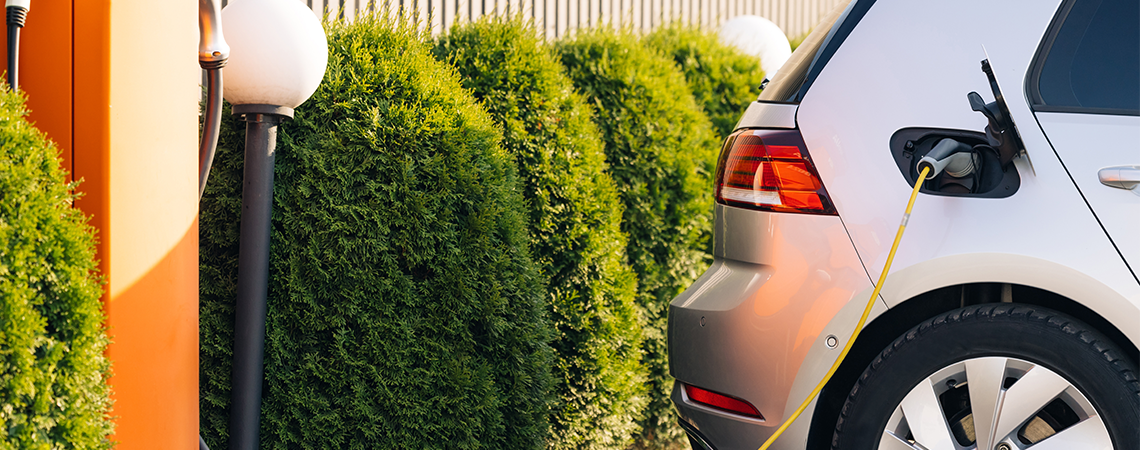Don’t stop here
There’s much more to discover!

Fully electric vehicles are still a niche in the Italian market. However, the numbers are expected to increase in the coming years. Let's explore the features of e-mobility to understand how we need to change our approach to mobility, both in cities and for long distances. Here are 10 things to know and share.
INDEX:
10 things to know about electric cars
For both city and long-distance travelers
In 2022, 1,316,702 new cars were registered in Italy. Of these, 49,536 were fully electric, according to Unrae. Overall, it's estimated that around 130,000 pure electric cars were on the roads in Italy as of January 2022, based on MOTUS E data. E-mobility is crucial in the shift towards zero CO2 emissions as these vehicles are the most efficient in terms of energy use, with 70% of the energy generated by the batteries being transferred to the wheels, compared to roughly 25% for current internal combustion engines.
The “pure” electric car market still represents a small niche (3.7% of the whole car market) in Italy, yet it holds significant potential for growth in the years ahead. These models offer numerous advantages, but fully appreciating them necessitates a radical shift in mindset. Adopting electric mobility requires embracing a new approach to driving and vehicle use.
1 - Electric car models do not feature a clutch pedal or gear shift lever. They operate similarly to automatic cars: drivers can simply choose their drive mode and press the accelerator. When released, the car gradually slows to a stop.
2 - The dashboard is different from an internal combustion engine car: there is no tachometer, but rather a voltmeter or an instant energy consumption indicator. Instead of a fuel gauge, an indicator displays the remaining battery range.
3 - The range of an electric car's battery varies depending on the model and usage. Generally, it covers fewer kilometres than a traditional internal combustion engine car. The range can vary between a minimum of 100 km to a maximum of 550 km.
4 - In cold weather, the performance of an electric car's battery may decrease. However, it is difficult to estimate the reduction in kilometres because the battery can be recharged using the kinetic energy produced by braking.
5 - You can charge an electric car at home using a standard 3 KW power system. To prevent home blackouts, you can install a wall box, which is safer and charges faster than a standard outlet.
6 - Charging costs vary based on the location: home charging typically involves a slower rate, whereas public stations may offer faster charging options. Costs generally range from 0.25 to 0.30 euros per kWh. For a car with a 50 kWh battery, a full charge would cost between € 12.50 and € 15 euros (source: Plenitude On The Road).
7 - The lights and on-board instrumentation use the same battery energy. It's important to use the heating and air conditioning systems cautiously, always monitoring the battery life to ensure optimal autonomy.
8 - Maintenance is minimal because there are no engine parts affected by fuel combustion. Brake wear is also reduced due to the kinetic energy recovery system, which slows the car down when the accelerator is released. The brake pedal is used only for the final stop.
9 - All electric cars come with a warranty that guarantees at least 70% residual battery capacity after 8 years or approximately 150,000 km.
10 - In the event of rain or snow, there are no safety risks with an electric motor, which is insulated and therefore cannot transmit electricity to those on board or nearby. In case of a malfunction, the high-voltage system automatically shuts down.
It is essential to learn how to plan long journeys, as it's necessary to know where charging stations are located along the route. Various apps (like those from operators) offer the ability to locate charging points on a map, allowing travelers to plan a journey by entering the starting point and destination. Particularly important for international trips is the possibility of eRoaming between operators.
Attention must also be paid to service equipment. In Europe, the most common cable is the Type 1, which supports both single-phase and three-phase charging up to 22 kW. For AC charging, it’s usually necessary to use CHAdeMO and CCS Combo 1 and 2. The former allows for fast charging up to 50 kW, while the latter standard supports charging at both slow and up to 50 kW fast charging stations.
For those who use electric cars in urban settings and for short-range travel, careful management of vehicle use is advisable. Planning trips that follow more linear routes can help reduce battery consumption: not necessarily the shortest one, but the one with fewer hills or uneven sections.
There’s much more to discover!
Electric cars – meaning full electric vehicles – are powered by an electric motor that operates using electricity stored in batteries. But how does this motor work? In this article, we seek to clarify.
The history of electric cars is truly unique: unlike many other technologies, the path of battery-powered vehicles has been marked by highs and lows and unexpected turns of events. Despite various theories regarding the date of birth of the first electric
Plenitude inaugurates a new attraction at Leolandia amusement park to introduce children and their families to the world of electric mobility.